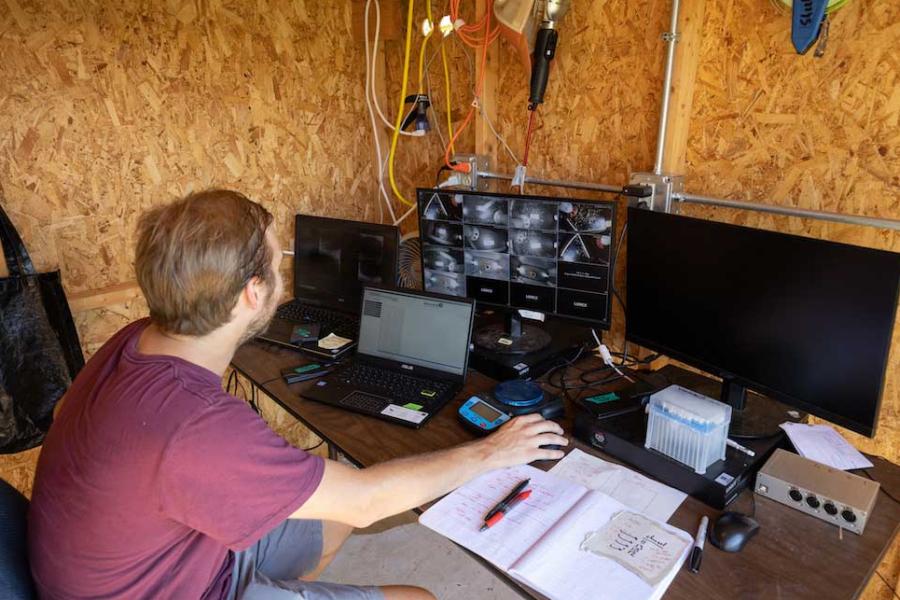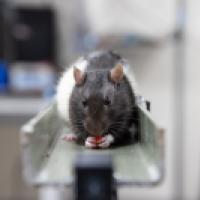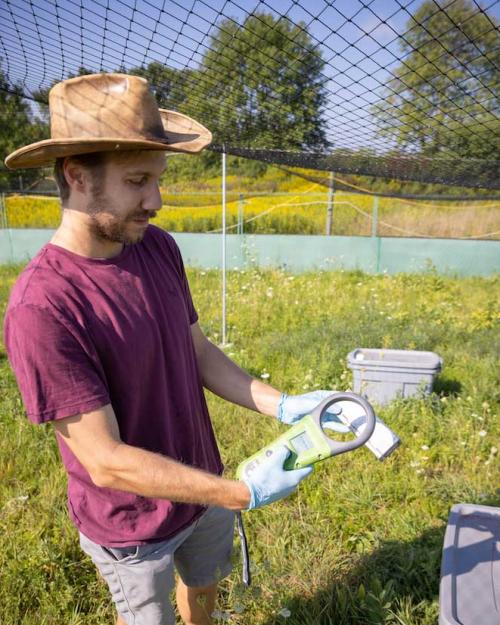The effects of social connections ripple through a lifetime for both humans and nonhuman animals, many studies have shown. Animal behavior scientist Matthew Zipple wants to know more.
“I’m interested broadly in social relationships, but my focus is on how an animal’s mother can impact a wide range of outcomes: in childhood, adulthood, and even between generations,” said Zipple, a Klarman Fellow in neurobiology and behavior in the College of Arts and Sciences.
To learn about the longterm impacts of maternal care, other social relationships, and early-life adversity, Zipple has studied a variety of animals in different settings, including baboons in Kenya, wild swamp sparrows in northeast Pennsylvania, and – his current project – mice in a natural outdoor setting near Cornell’s Ithaca campus.
“Matthew has been a force of nature when it comes to his science,” said Michael Sheehan, the Nancy and Peter Meinig Family Investigator in the Life Sciences, associate professor of neurobiology and behavior and Zipple’s faculty co-host (with Kern Reeve, professor of neurobiology and behavior.) “He is a rising star within the field of animal behavior.”
Zipple is using his three-year Klarman Fellowship to develop evolutionary theory that explains the ways mother-offspring relationships shape the evolution of life history traits, things like longevity and pace of reproduction. He is also using mice as a model to understand the fine-grained mechanisms mothers can use to shape offspring’s outcomes.
Over the summer, Zipple conducted a several-week outdoor experiment with lab mice of the C-57 strain. As a biomedical model, this strain has been used in a large portion of the research on physiology, neurobiology and health in mammals.
“But a massive gap exists when it comes to understanding their social behavior because lab mice are studied almost exclusively in the lab,” Zipple said. “I’m trying to change that.”
The Sheehan Lab provided a perfect setting for this experiment: a unique outdoor enclosure system largely established by doctoral student Caleb Vogt, “a world-class system for studying lab mice living outside under natural social conditions,” Zipple said. “I came into a system that was perfectly positioned for me because all the hard leg work and innovation had already been done and it was set up to ask fine-grained questions about the social determinants of survival in lab mice.”
Zipple and five undergraduate researchers placed nearly 200 mouse pups outdoors with their mothers at two weeks of age. Using microchip implants, researchers were able to trace the mice’s movements around nests and “resource zones” stocked with food and water. While the researchers were able to track mouse weight, nest temperature and other important statistics, the mice were free to roam and interact naturally.
“The main exciting result was that the amount of time a mother spends in her nest’s resource zone during the infancy period predicts both short-term and long-term health and fitness outcomes for her pups,” said Zipple, who is now working with the data toward peer-reviewed publication. “Maternal presence seems to matter a lot.”
By rewilding lab mice, the lab members are able to study how complex physical and social environments shape individuals, opening possibilities for the future, Sheehan said. “We are trying to expand the range of questions that can be studied using biomedical approaches by literally taking mice out of their normal shoe-box sized cages and studying them in a natural environment.”
Zipple said that the open structure of the Klarman fellowship, which provides funding for three years of research, free of specific grant requirements or teaching responsibilities, gives him the freedom to redirect questions and take risks.
“The nature of science is that you don’t know exactly what a scientific path will look like until you go down it. If I was working for a faculty member instead of with a faculty member, my ability to explore broadly and to ask risky questions would be much diminished,” he said.
With the freedom of the fellowship, Zipple is pursuing additional projects. Long fascinated by the role of emotions in animal behavior, he launched a survey this month, asking a broad range of researchers – psychologists, neurobiologists and behavioral ecologists – about their perceptions of animal emotions: What kinds of animals have emotions that matter, and how confident are they of these perceptions?
Zipple also co-hosts The Animal Behavior Podcast, now in its second season, with Amy Strauss, a science educator and doctoral student at the University of Massachusetts.
He said he enjoyed interactions with other Klarman fellows studying in a wide range of sciences and humanities.
“I just love the interdisciplinary nature of it,” he said. “When I’m talking with the other Klarmans about physics or economics or history, it’s extremely unusual that I don’t identify some kind of either spoken or unspoken connection between our work, despite being from such different fields.”









